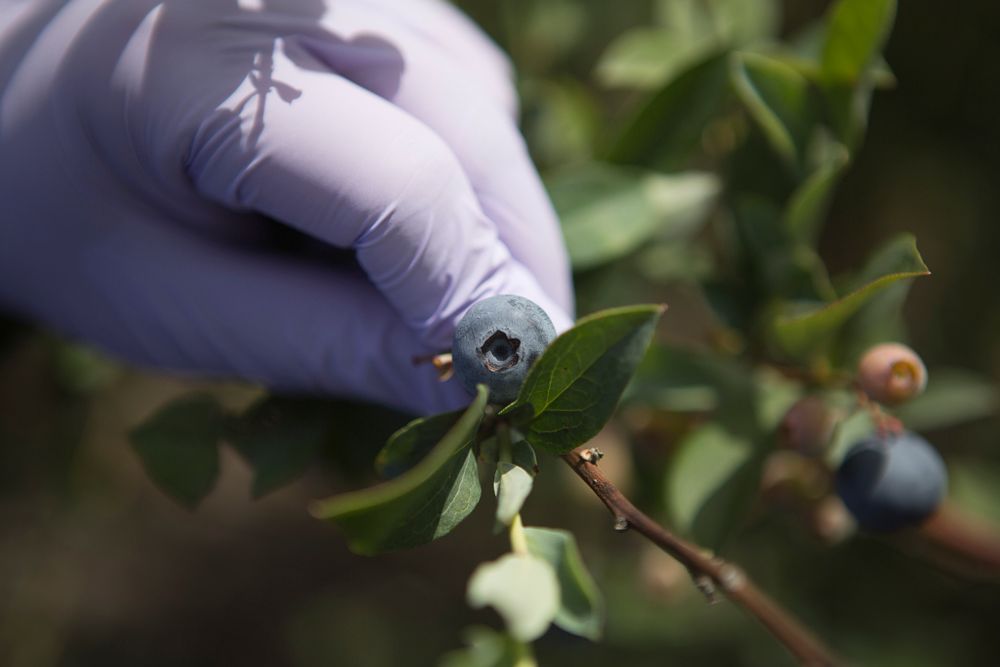Lately I’ve received several calls about green colored beetles appearing on the fruit and foliage of trees in many people’s home landscapes. More often than not, the culprit is the green June beetle.
Green June beetle adults are velvet green with orange or rust stripes along the outer margins of their wing covers. They grow to about half an inch to an inch long.
Peak beetle flights begin in late June, when they start feeding on fruits like apples, peaches and figs. Usually they prefer over-ripe or decaying fruit.
Treat grubs now
If you’re facing a beetle invasion, now is the time to get rid of their grubs.
The best time to control green June beetles is July through September. Pesticide treatments applied during early spring generally don’t control as well, and often you’ll have to do a second application. If the soil is dry, irrigate before you treat. After treatment, the grubs will come to the surface.
Green June beetle grubs are most abundant in sandy or sandy loam soil rich in organic matter. When the grubs feed on grass roots, the grass gradually thins, yellows and dies. This makes the grass feel soft and spongy. Scattered, irregular, brown patches of grass appear and increase in size over time.
Tunnel through roots
The root injury reduces the turf's ability to take up water and nutrients and withstand drought stress. Heavily infested grass pulls up easily.
The beetles do most of their damage while digging horizontal tunnels. A few tunnels can loosen and aerate the soil; large numbers cause severe damage. Where tunnels are extensive, the ground will be somewhat spongy.
Signs are holes, frass and wasps
To find evidence of grub worm activity, look for exit holes surrounded by small mounds of pulverized soil. This will look similar to anthills. Grubs feed in the soil during the day and feed aboveground on decaying organic matter at night. Frass pellets on the soil surface are also signs of infestation.
Large numbers of dark-colored, parasitic wasps hovering over lawns on sunny days in the summer or fall may also be a sign of infestation. These wasps will have yellowish to white stripes on their abdomens.
Grubs also attract moles, armadillos and birds, which can make an already damaged lawn look worse.
To confirm a grub infestation, check the area. Get a shovel, and sift through several samples of soil, roots and thatch. Make your sample at least one foot deep and one foot square. After examining the area, replace and water the soil and plants.
Count before you treat
Finding an occasional grub is no cause for alarm. Healthy turf can usually outgrow the root loss caused by a couple of grubs. The usual treatment threshold is five to seven grubs per square foot.
Several insecticide control options are available for green June beetle grub control including trichlorfon (Bayer Advanced), imidacloprid, carbaryl (Sevin SL) and halofenozide (Grub-B-Gon). Always read and follow pesticide label directions closely. Make applications late in the day because grubs move to the surface during the evening. Treat all infested areas, or grubs may later move back into treated areas.
Unfortunately, as the grubs decay the odor can be very strong. With high populations it may be necessary to remove the grubs from the treated area to prevent odor problems.






